Deep dive into FLAG metrics & reporting for footwear & apparel brands. The upcoming FLAG Guidance will require brands submitting Science-Based Targets.
SBTi Software and Services for Fashion
Software and expertise to help brands and suppliers set and achieve Science-Based Targets.
Selected by brands that set SBTI
How we help you set and achieve your Science Based Targets
Software and expertise to commit, set, and submit SBTi targets.
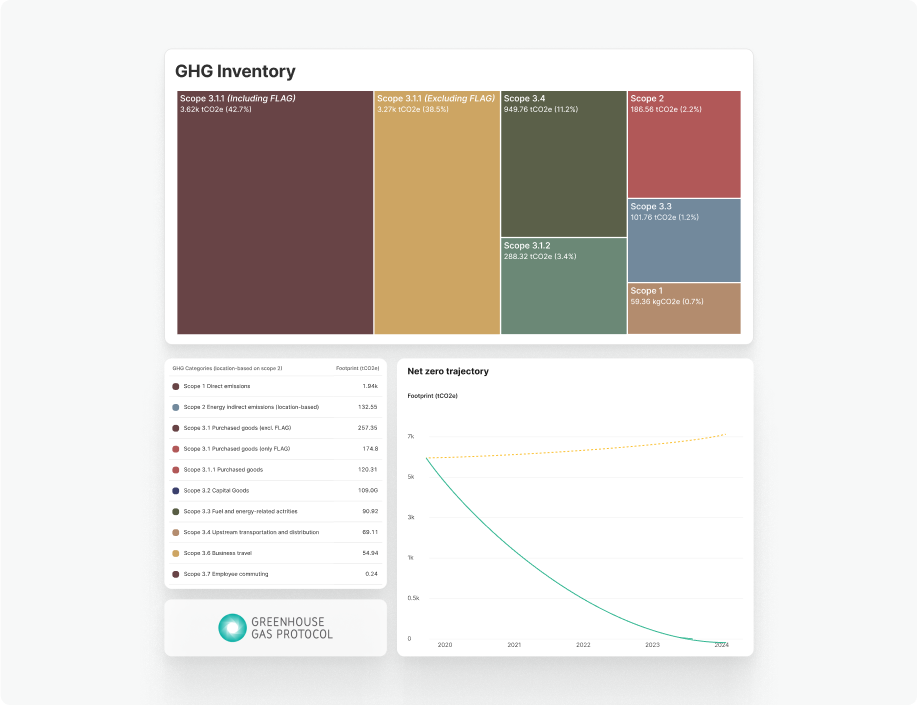
Heading 1
with a request body that specifies how to map the columns of your import file to the associated CRM properties in HubSpot.... In the request JSON, define the import file details, including mapping the spreadsheet's columns to HubSpot data. Your request JSON should include the following fields:... entry for each column.
Understand your footprint and prepare to commit
Measure your full carbon footprint across operations and supply chain to understand what counts toward your targets.
Our team explains the rules in simple terms and delivers a clear checklist to move forward and get ready to commit with SBTi.
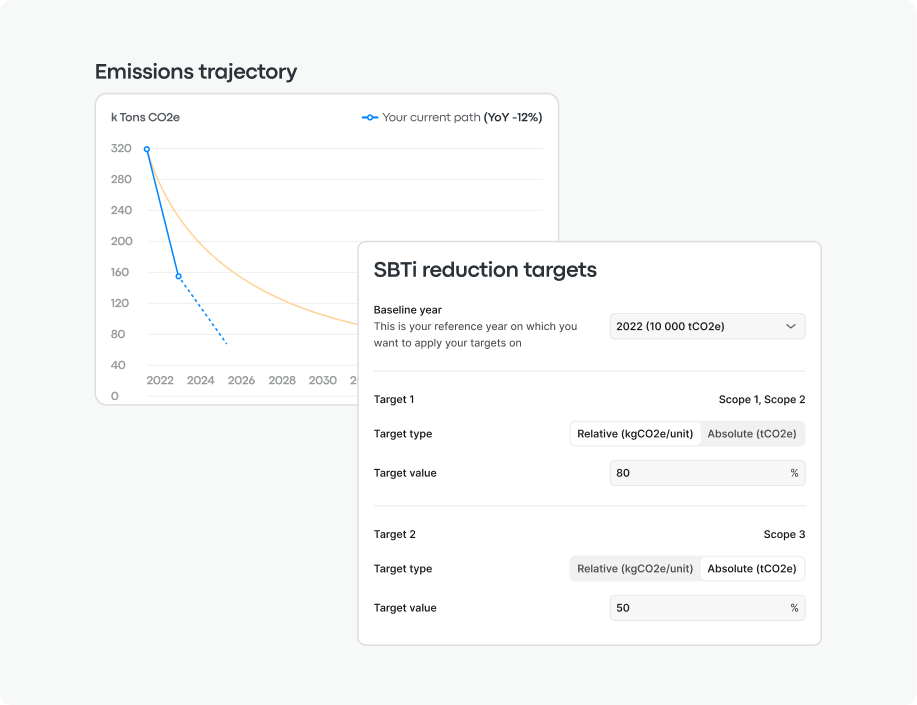
Heading 1
with a request body that specifies how to map the columns of your import file to the associated CRM properties in HubSpot.... In the request JSON, define the import file details, including mapping the spreadsheet's columns to HubSpot data. Your request JSON should include the following fields:... entry for each column.
Choose your baseline and set achievable targets
See emission trends yearly and year-to-date across all Scopes and categories. Utilize scenario modeling to test different reduction pathways.
We help you set a baseline, model different types of targets against your expected growth and guide you on what target type to choose.
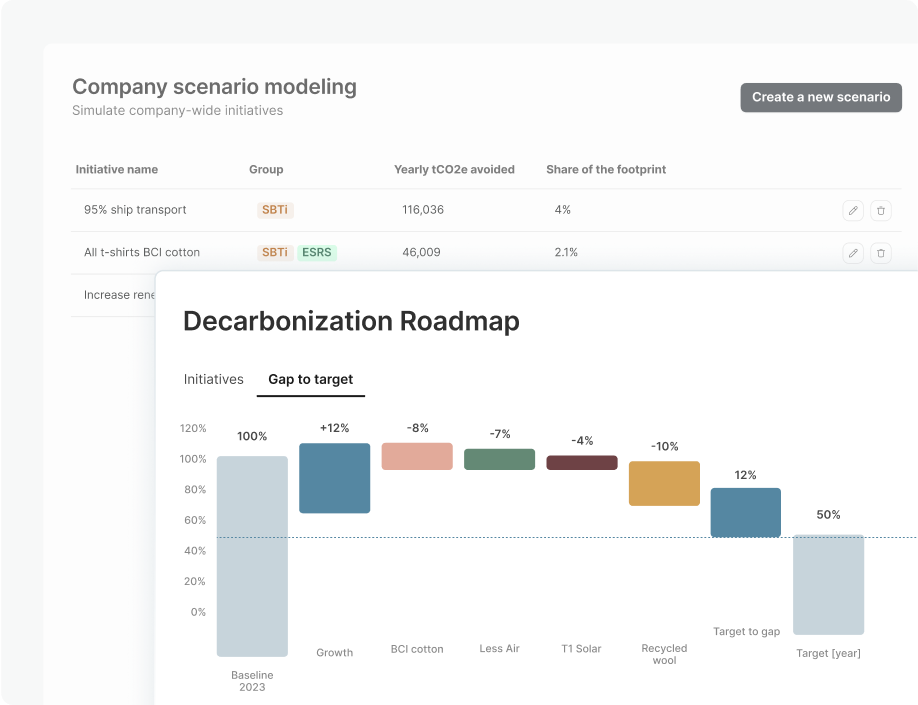
Heading 1
with a request body that specifies how to map the columns of your import file to the associated CRM properties in HubSpot.... In the request JSON, define the import file details, including mapping the spreadsheet's columns to HubSpot data. Your request JSON should include the following fields:... entry for each column.
Turn your targets into a realistic reduction plan
Visualize hotspots to identify the reduction opportunities, and simulate them at company and product level.
Together we prioritize initiatives, test feasibility, and align the roadmap with your business and sourcing strategy.
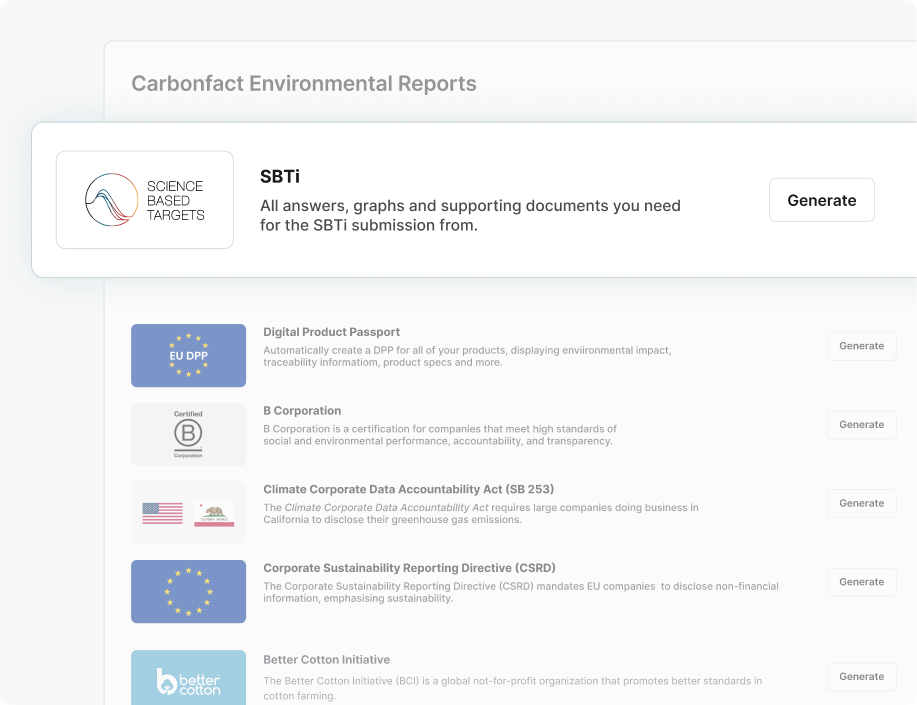
Heading 1
with a request body that specifies how to map the columns of your import file to the associated CRM properties in HubSpot.... In the request JSON, define the import file details, including mapping the spreadsheet's columns to HubSpot data. Your request JSON should include the following fields:... entry for each column.
Submit your targets and communicate them
Carbonfact creates the submission package for SBTi and supports you in communicating your commitments.
By consolidating all data, models and targets, Carbonfact automatically generates an editable submission report for SBTi.
Our team helps you finalize the SBTi submission materials and supports you hands‑on through the submission process.
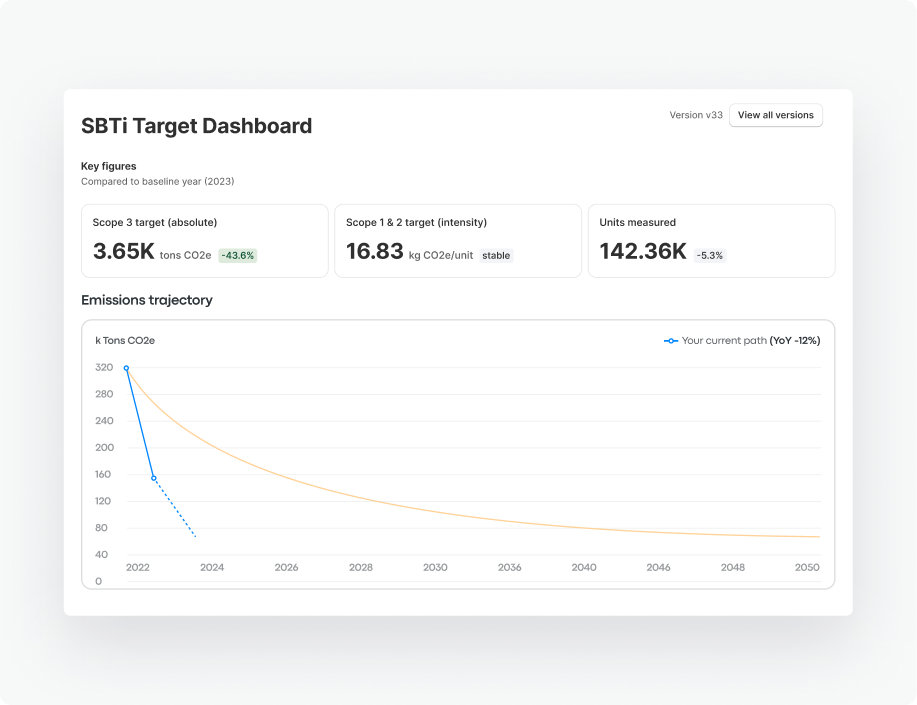
Heading 1
with a request body that specifies how to map the columns of your import file to the associated CRM properties in HubSpot.... In the request JSON, define the import file details, including mapping the spreadsheet's columns to HubSpot data. Your request JSON should include the following fields:... entry for each column.
Keep your targets on track year after year
Carbonfact updates your scenarios and roadmap as your business and footprint evolve. We also help with rebaselining.
Dashboards and roadmaps update automatically as new data comes in. Monitor your progress your a net‑zero trajectory chart.
Ongoing expert support to update plans, and maintain audit readiness. We provide step-by-step internal guidance on when to re-baseline.
How Carbonfact works
We’ll ingest all your existing product and supply chain data. Whether it lives in a PLM, ERP, Excel Sheet or a combination thereof, we’ll consolidate and clean it. We’ll do all the heavy lifting too – we can build a custom connector that integrates with your existing systems, automating future data import and creating a live connection to Carbonfact.

Incomplete data? Not a problem – we fill data gaps using Ai and smart rules, automatically filling missing values like component weights, dtex, and process-level steps.

Once processed, Carbonfact automatically calculates your Scope 1–3 emissions and prepares a defensible baseline year, ready for target-setting. FLAG emissions are reported separately if required.
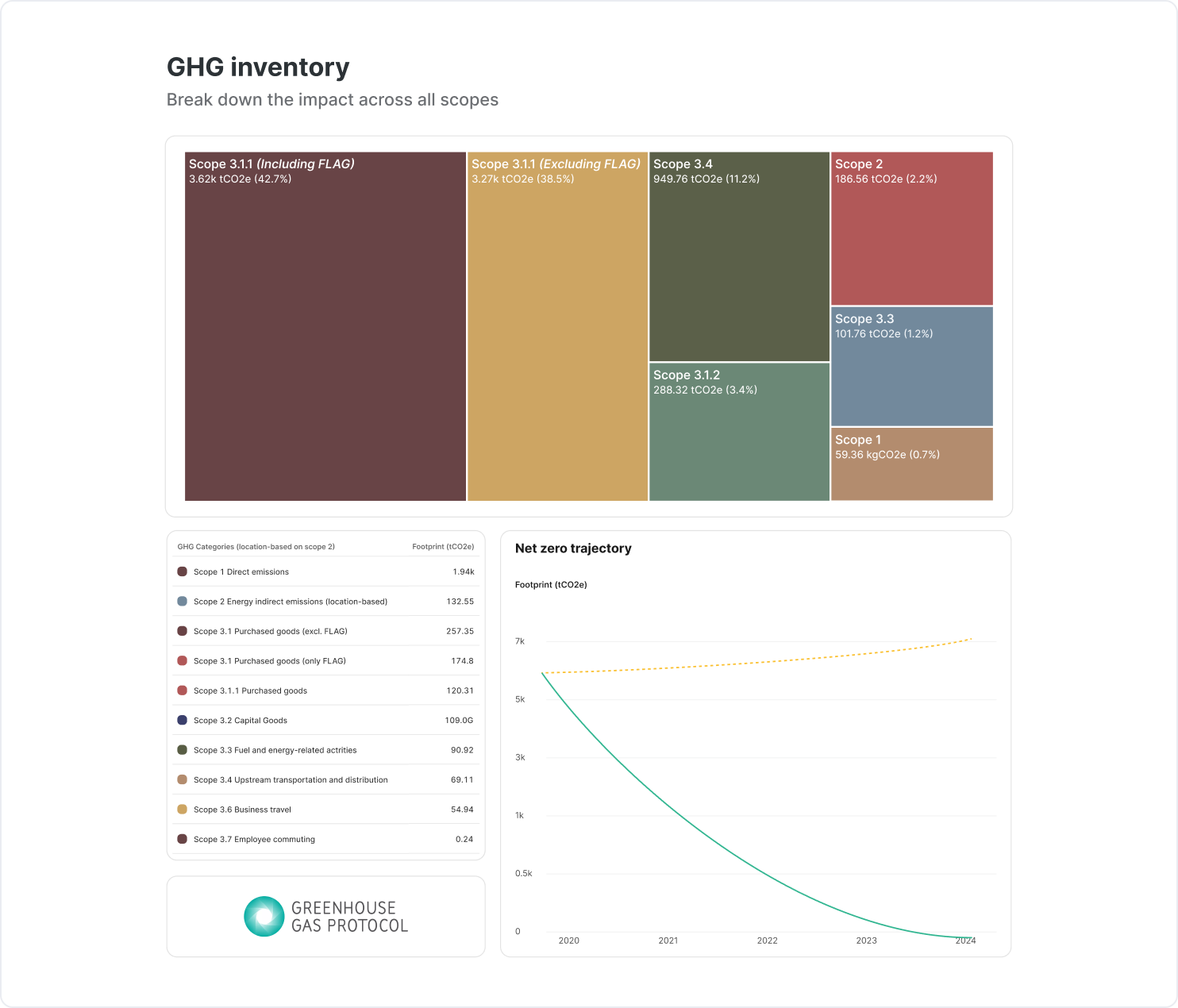
Use Carbonfact to simulate decarbonization levers — like material changes, supplier energy shifts, or transport options. See the impact of growth, compare 2030 vs. 2035, and define science-based targets you can realistically achieve.
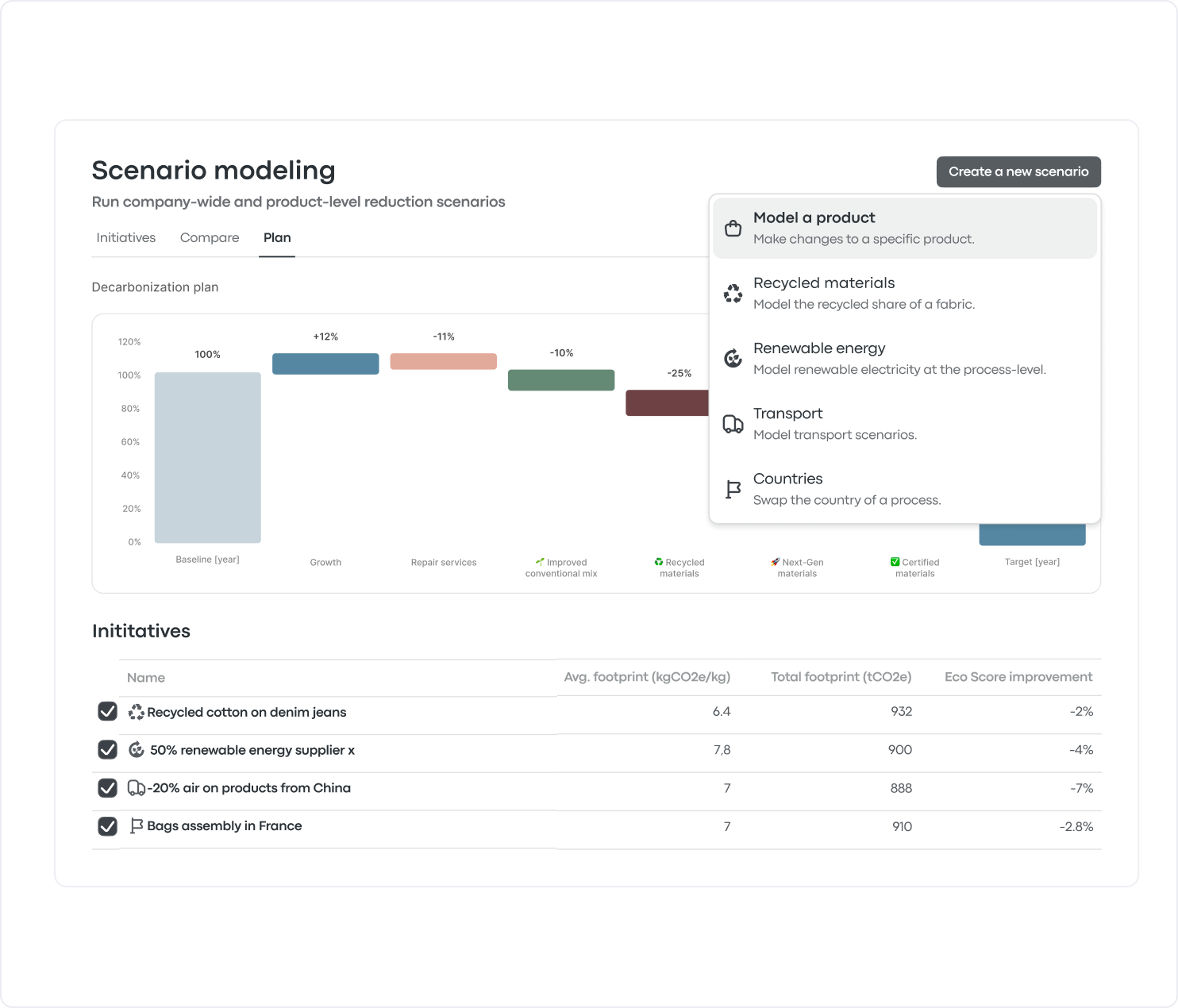
With all data and modeling in place, Carbonfact generates your submission-ready report in SBTi’s structure. Our team reviews and submits it for you, ensuring your targets are validated and aligned with global standards.
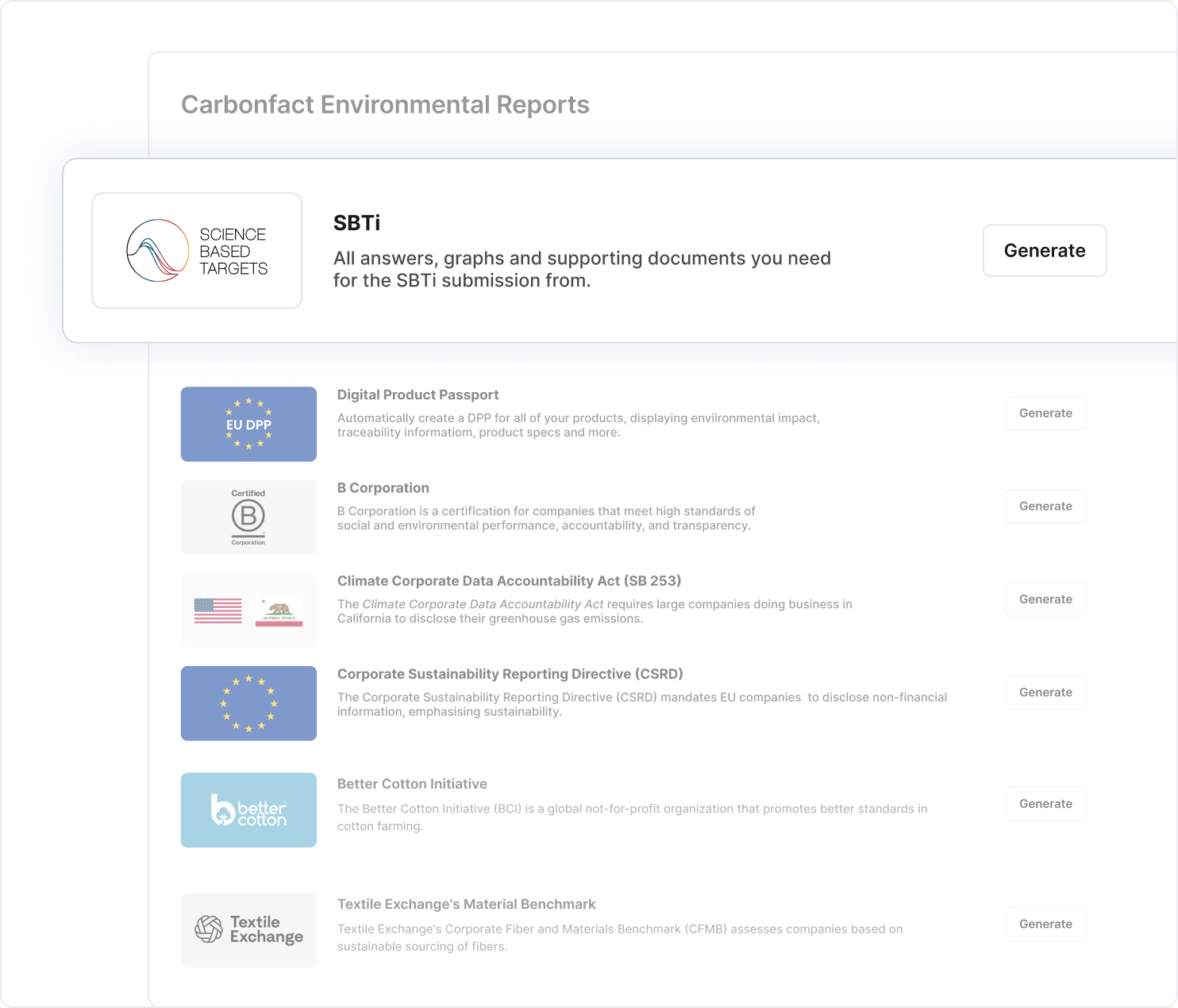





A Platform to Evolve With
From carbon accounting to compliance to decarbonization — all in one place
Carbon Accounting
Switch from consultants to fully transparent, fashion-specific carbon accounting.
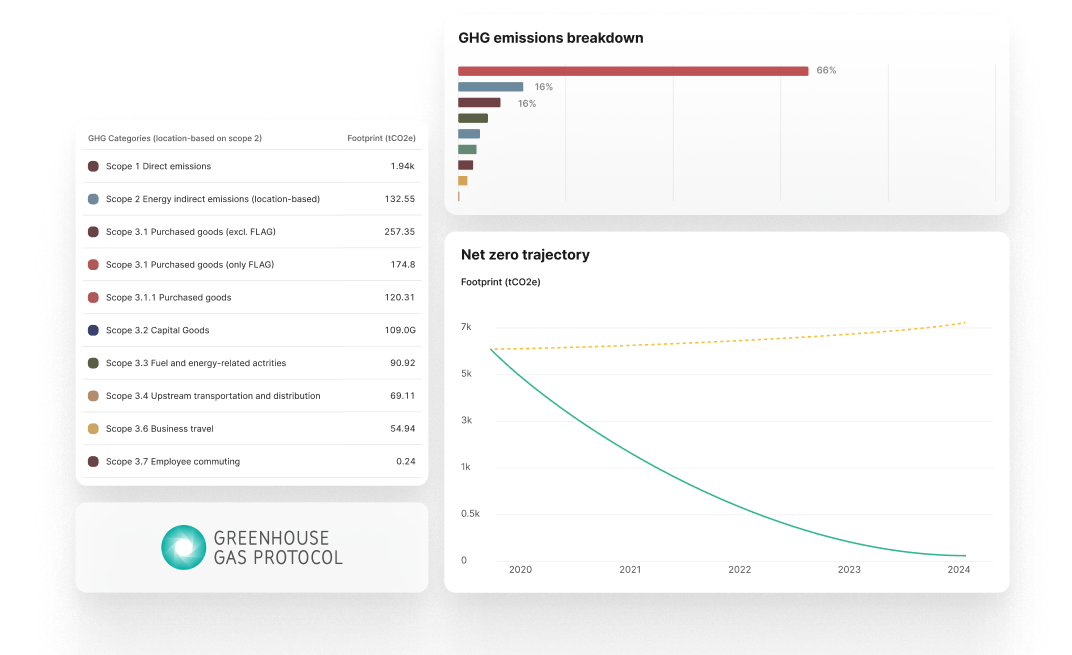
Decarbonization
Model product and company-wide reduction scenarios using your real data.
Reporting
Simplify compliance with automated, audit-ready reports.
Product LCAs
LCAs across your full catalogue – powered by primary data.
Data Management
Connect your systems – we’ll clean, map, and enrich your data.
A Platform to Evolve With
From carbon accounting to compliance to decarbonization — all in one place
Carbon Accounting
Switch from consultants to fully transparent, fashion-specific carbon accounting.

Decarbonization
Model product and company-wide reduction scenarios using your real data.
Reporting
Simplify compliance with automated, audit-ready reports.
Product LCAs
LCAs across your full catalogue – powered by primary data.
Data Management
Connect your systems – we’ll clean, map, and enrich your data.

Expert Support at Every Step
Hands-on support so you can focus on reduction, not data admin.
Dedicated Onboarding & Customer Success Manager
Access to Data & Climate Science experts
Access to the Carbonfact Collective – a peer network of suppliers and brands
What Our Customers Say

-1.png)







“We needed a solution that could handle the complexities of the apparel supply chain, provide year-to-date insights, and support with detailed scenario analyses for our supply chain. Carbonfact is not just a Carbon Management Software, but an extension of our sustainability team.”

Learn more about Science-based Targets


Detailed guide on how to set, validate, and disclose SBTi target, and practical advice on choosing target type for apparel and footwear brands and suppliers.
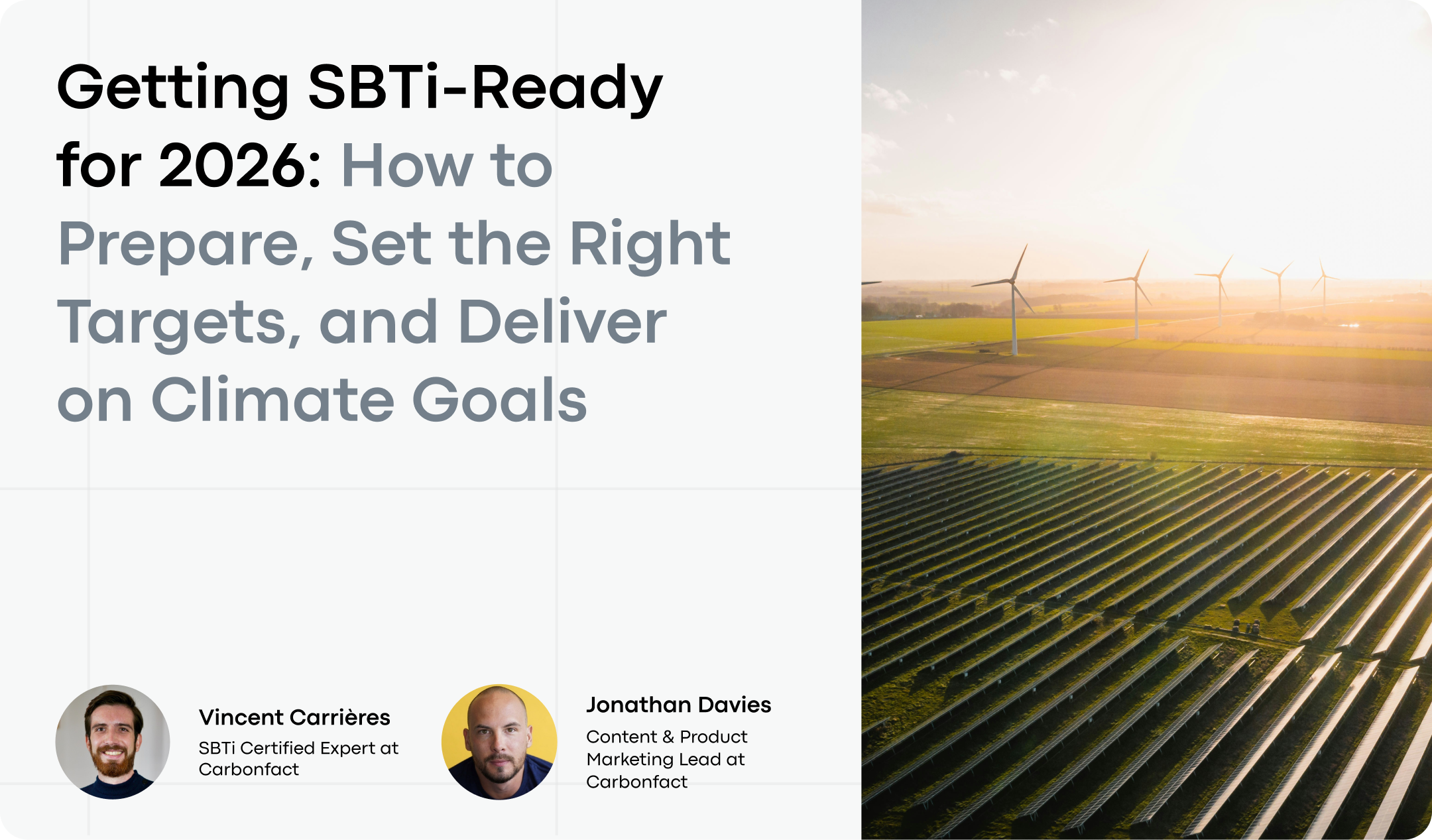
In this webinar, we’ll walk through the SBTi process, how to choose the right targets, and what to consider in terms of timeline and data preparation.
Get Started with SBTi
SBTi is included with Carbonfact’s Decarbonization Add-on
Frequently Asked Questions
What is the the Science Based Targets initiative (SBTi)?
The Science Based Targets initiative (SBTi) helps companies set greenhouse gas reduction targets that are consistent with climate science and the Paris Agreement. Committing to SBTi shows customers and investors that your brand is serious about reducing emissions in line with a 1.5°C pathway. It’s quickly becoming the industry norm, over 400 apparel and footwear brands are using SBTi as their north star for carbon reduction goals. Read our SBTi deep dive here.
Why do brands set SBTs?
Increasingly, SBTs are required by investors, by brands for their suppliers, and by industry groups such as Cascale and the European Outdoor Group. Having SBTi validation signals to investors, NGOs, and the public that a company’s targets are consistent with a 1.5°C pathway and verified by an independent third party.
SBTs also prepare companies for upcoming regulation and disclosure frameworks. They are compatible with CSRD (ESRS E1 requires 1.5°C-aligned targets) and aligned with CDP, TCFD, and ISSB.
Does the Carbonfact team help customers with the submission process?
Yes. Carbonfact provides hands-on support throughout the SBTi submission. Our team prepares the Corporate Target Submission materials and assists with completing the SBTi Services validation portal. We guide you through common queries, required data breakdowns, and ensure your documentation meets SBTi criteria, while following best practices collected while working with hundreds of brands.
What type of SBTs should we choose?
SBTi recognizes three main types of reduction approaches:
- Absolute reduction targets – committing to cut total emissions by a fixed percentage.
- Intensity targets – committing to reduce emissions per unit of production or per revenue.
- Supplier engagement – ensure a set % of suppliers (by spend or emissions) adopt their own SBTs within 5 years.
At Carbonfact, we help brands decide between absolute and intensity targets and define the right scope coverage, based on customer’s revenue growth projections, product portfolio, and decarbonization ambition.
Does Carbonfact team help with baseline year selection and re-baselining?
Yes. Carbonfact first helps brands build a GHG inventory that is fully compliant with the GHG Protocol Corporate Standard. Once the baseline year is defined (we recommend using the most recent year), we help set baseline emissions across scopes 1, 2, and 3.
At Carbonfact, we view environmental metrics as inherently dynamic: as brands collect more primary data and refine their understanding of carbon footprints, our team helps update baselines to ensure they reflect the most accurate information and remain SBTi-aligned.
Watch Everlane's webinar on re-baselining or read our deep dive blog post on rebaselining here.
How does the platform support scope 3, where most of our emissions lie?
According to SBTi, if the Scope 3 emissions makes up 40% or more of total emissions, a scope 3 target is required. Targets must collectively cover at least 67% of scope 3 emissions (this is called a target boundary).
Carbonfact maps emissions across your supply chain, identifies hotspots, and runs simulations to test material changes or supplier energy improvements. We then help you set a scope 3 target boundary that meets SBTi’s 67% coverage requirement while focusing on the areas where your brand has the most influence in order to create a realistic decarbonization strategy.
What tools does the platform offer for modeling emission reduction scenarios?
Carbonfact provides two main modeling tools for textile, and footwear brands:
- Product Impact Simulator: Allows simulating new products before production, testing material origins and supplier changes, and modifying individual components with real-time impact calculations
- Company CO2 Modeling Tool: Enables testing scenarios like increasing renewable electricity usage across supplier networks and modeling material transitions across entire product lines.
Read more about our Eco-Design and Decarbonization features here
Can you track your SBT progress in the platform?
Yes. Carbonfact’s platform allows you to track progress against SBTs with dashboards, trend views, and scenario modeling. You can configure targets with a target-setting wizard, monitor annual progress against your reduction pathway, and model different levers to see how supplier energy, materials, or logistics affect your trajectory. Reporting outputs are designed to map directly to SBTi expectations.
How does Carbonfact platform overall support SBTi target-setting journey?
Carbonfact helps you every step of the way:
- Build a reliable baseline with product-level data.
- Help choose the type of targets according to your business growth trajectory.
- Model reduction scenarios (materials, supplier energy, logistics).
- Create decarbonization strategy with your team to define pathways.
- Prepare submission files and justification documents for SBTi.
- Support re-baselining when science or data improves.

